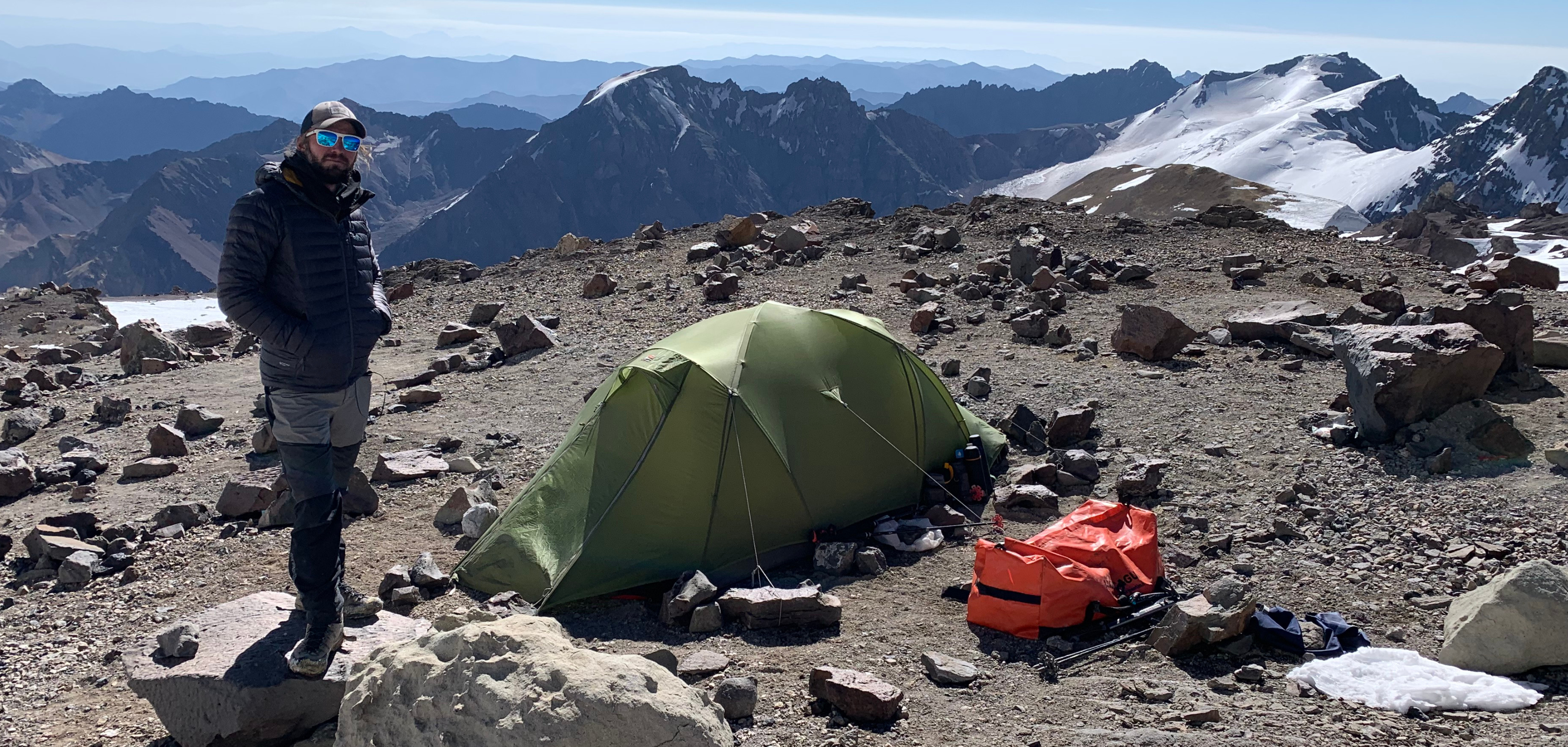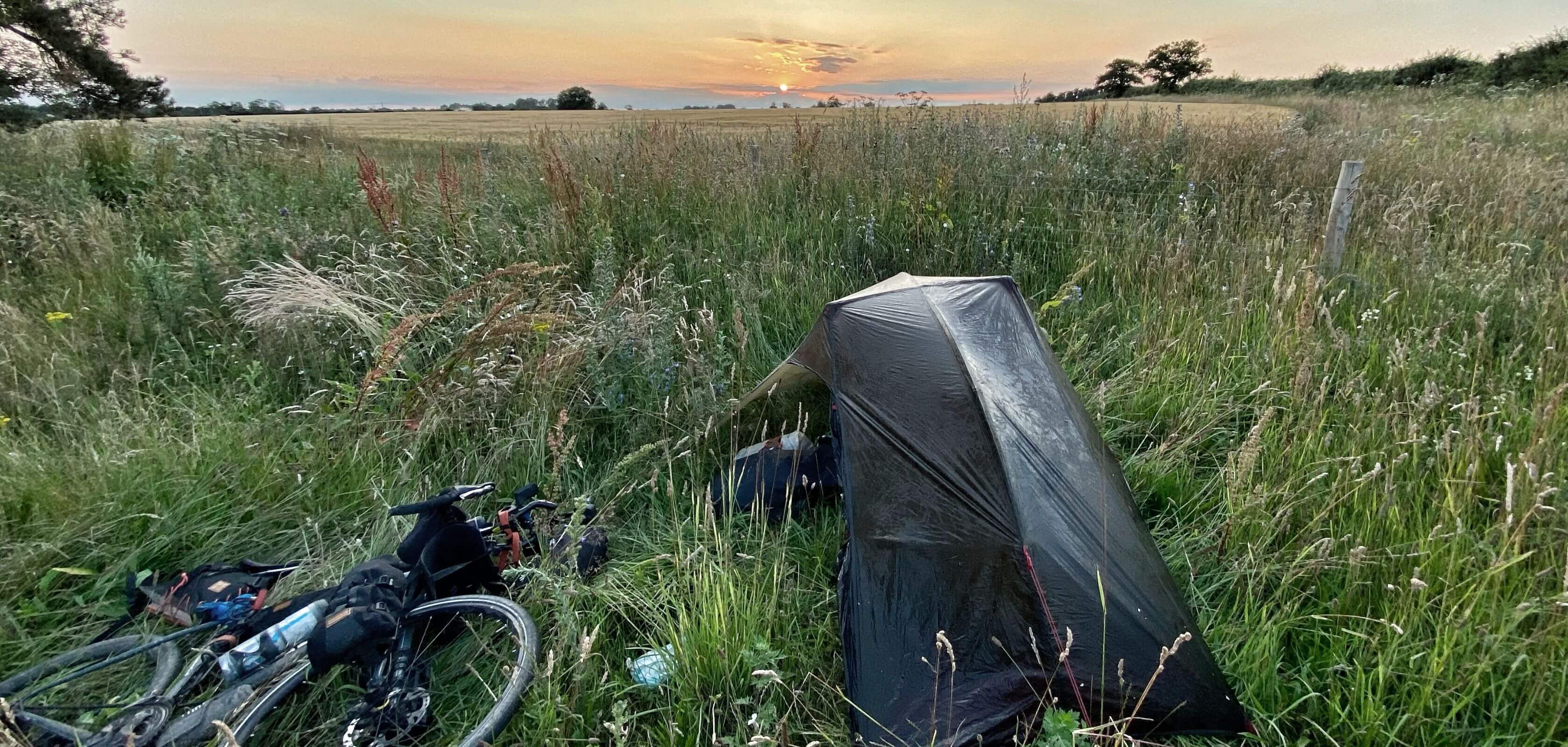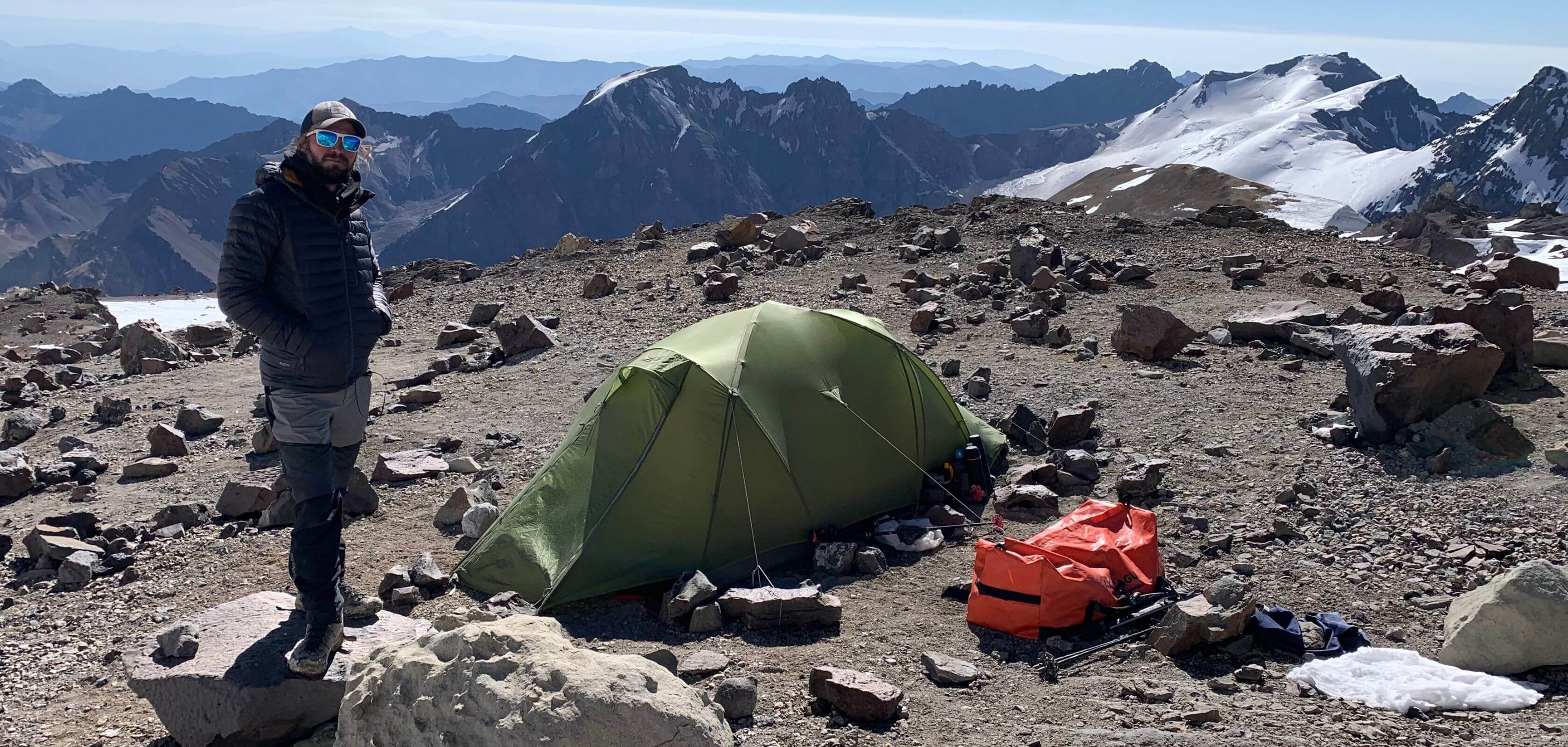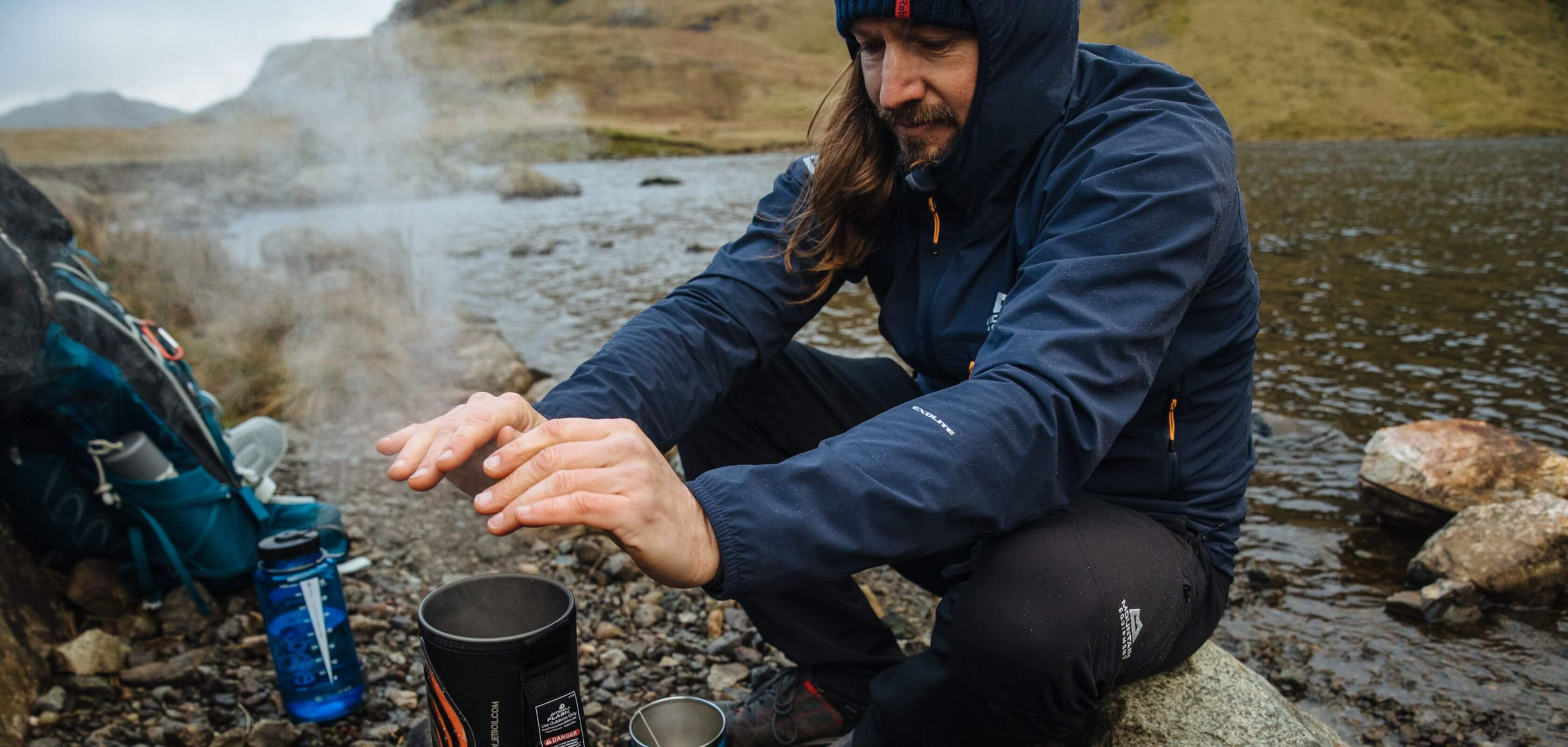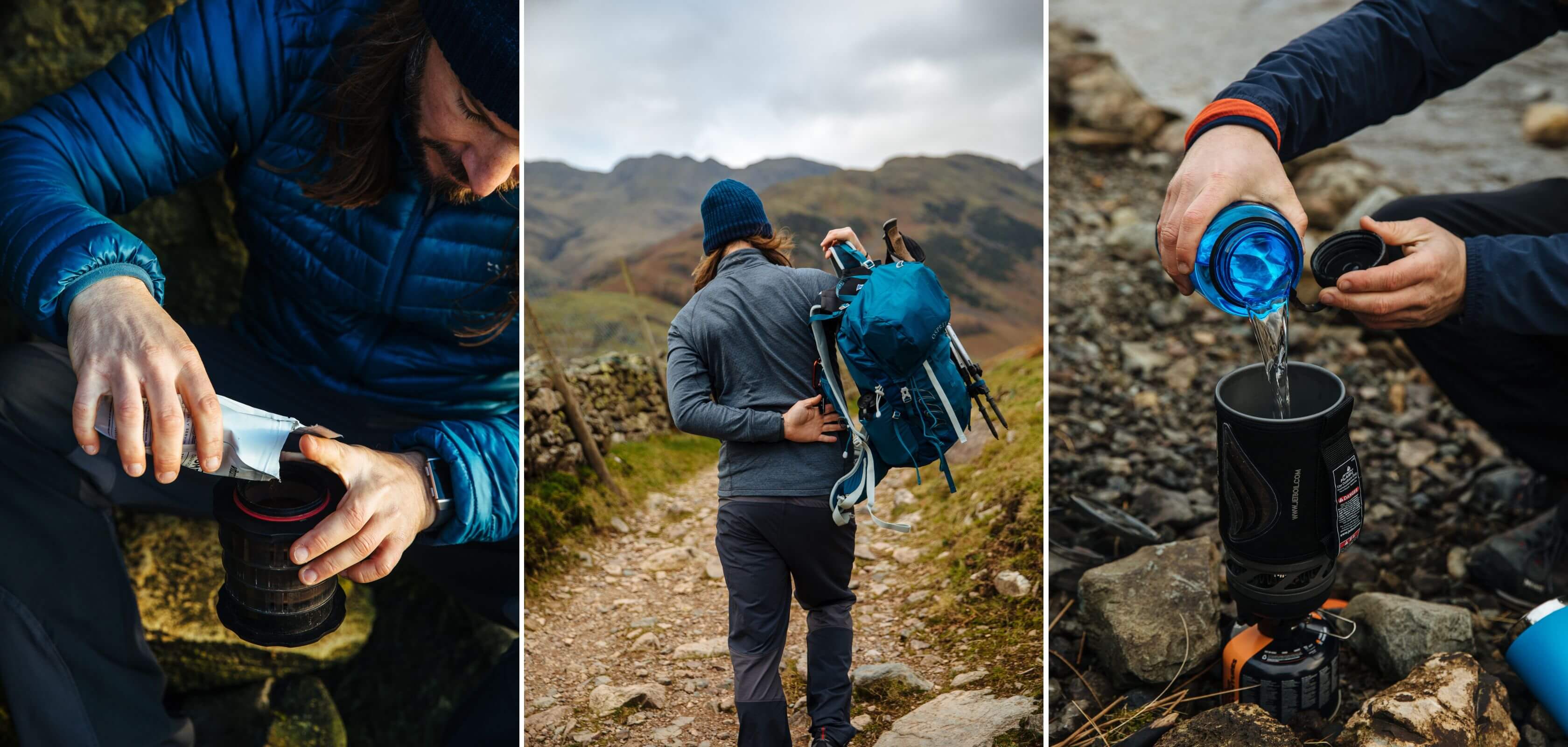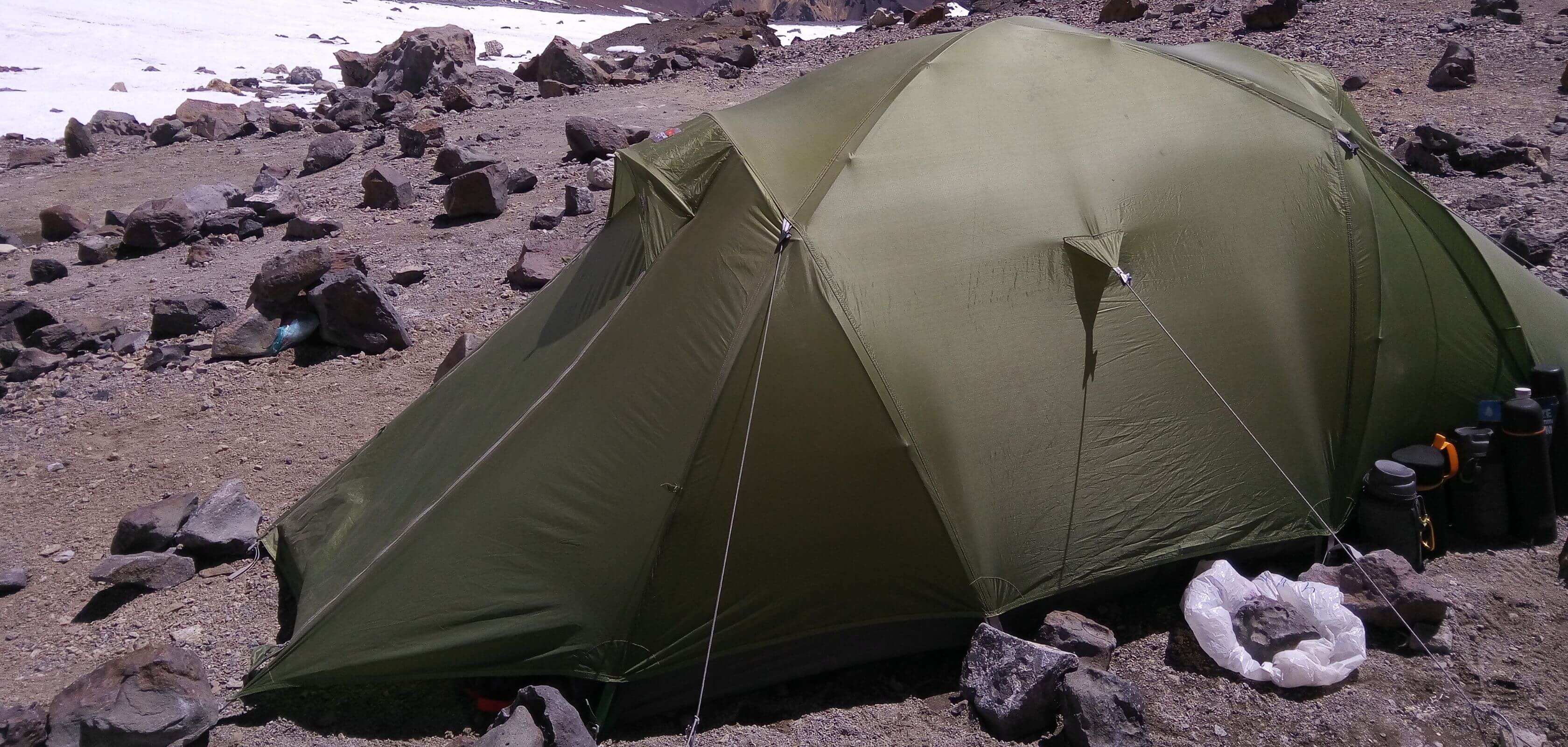Known for his remarkable feats of endurance, Jamie Ramsay has completed numerous jaw-dropping adventures. In this blog, he explains his packing process with useful tips for travelling light. Along the way, he shares his go-to camping list he relies on for his solo ventures. Plus, he reveals the pieces of kit he swears by when embarking on his incredible trips off-grid.
Spring and early summer are some of the best times to go camping. The weather is starting to get warmer, the countryside is vibrant green, and you can see stunning sunsets and sunrises.
When I’m packing for a camping trip, I always ask myself six questions and then refer to my previous camping kit lists to make sure I haven’t missed anything.
Because I’ll be spending half my time in my tent, I want to make sure I’m as comfortable as possible. Sleeping well isn’t just important for my recovery, but it means I’ll be ready to explore the next day. A little more packing weight in return for a good night’s rest is a small price to pay for feeling rejuvenated the next morning.
Here’s the six questions I ask myself before creating a kit list...
1. What’s the weather forecast?
2. How many nights am I going to be away?
3. What am I going to eat?
4. Where am I going to get clean water?
5. How comfortable do I want to be at night?
6. How much do I want to carry?
Once you’ve answered these questions, you’ll be ready to start choosing the perfect kit for your adventure.
My Go-To Kit List
1. Choosing The Right Backpack
I’d recommend assembling everything you want to take on your camping trip before you choose your backpack. The reason for this is, if you pick a large backpack straight off the bat, you’ll almost certainly try and fill it with additional, and often, unnecessary kit.
Personally, I think the Osprey Talon 44L is a good all-round size. It has good-sized pockets, attachment points and a useful stuff pocket for extra layers. Just note, this backpack doesn’t come with a waterproof cover - you’ll need to buy this separately.
2. Deciding Your Sleeping Arrangement
Choosing A Tent
The next questions are, do you take a one or two-person tent and what design should you choose? One thing to consider is what the ground is going to be like, as this will help determine the design you need. When I’m on bikepacking trips, I’ve pitched up on concrete and in bus stops where you can’t use tent pegs, so a standalone tent is best in this scenario. When hiking, I’ll prioritise lightweight options.
If I was going to recommend one tent, it would be the MSR Hubba Hubba NX. It can standalone (if needed), it’s lightweight (for a two-person tent), and it packs away easily. This is super useful when the weather’s bad, and you want to pack up quickly.
Choosing A Sleeping Bag
When choosing a sleeping bag, I tend to go for something that’s slightly warmer than what I think I need, because I’d rather be a little warm than shivering during the night. I also always take a sleeping bag liner for a little extra warmth and to keep my sleeping bag clean.
I’d suggest a sleeping bag from the Mountain Equipment Helium range. The 250 has a comfort limit of 2 °C, the 400 -6°C and the 600 –11°C – these are the lowest temperature limits to use each model of sleeping bag, so remember to check the weather before you head out! If you want to go lightweight and compact then the Spark series from Sea to Summit are great, although a little more expensive.
When it comes to sleeping bag liners, I highly recommend the Sea to Summit Reactor Thermolite Liner for colder nights and the Blue Mountain Polycotton sleeping bag liner for everyday conditions.
Choosing A Sleeping Mat
Your sleeping mat is the next important decision. I’d advise investing in a good one that’s warm (remember to check the R rating). Ensure it’s lightweight and packable too.
My favourite is the Thermarest NeoAir X Lite. It’s a little more expensive, but totally worth it. It’s also a good idea to buy some Tenacious tape in case you need to make repairs.
Choosing A Pillow
Lastly, do you take a pillow? I used to just use a jacket stuffed into a dry bag, but I’ve since upgraded to an inflatable pillow.
When it comes to recommendations, check out the Sea to Summit Aeros Premium pillow. Not only is it comfier than a scrunched-up jacket, it also packs down small and adds no additional weight to your backpack.
Choosing Lighting
I always take a head torch on my adventures. I like the Petzl Actik Core 600L because it throws a good amount of light and comes with a rechargeable battery. Although it’s a luxury, when I’m in my tent I like to take a Black Diamond Moji+ Lantern because it provides more ambient light and eases me into a good night’s rest.
3. Packing Your Camp Kitchen
I like to keep my camp kitchen as simple and compact as possible. When I put together my menu, I stick to foods that can be cooked with just boiling water, so I don’t have too much washing up after. This also means that you consume all the water you carry, unlike when you cook pasta.
Breakfast & Dinner
For breakfast, I normally have a sachet of oats; and for a hot drink, I opt for a stick of instant coffee (Starbucks do good ones).
For my evening meals, I tend to go for a Firepot dehydrated meal because they’re delicious and nutritious. After I’m done with cooking, I’ll use Lifeventure Biodegradable soap to wash up.
Cooking Equipment & Utensils
To boil my water, I’ll either use an MSR Pocket Rocket 2 Stove Set or a Jetboil Stash. Both stoves have advantages, but head-to-head they’re similar. The main difference to consider is that the Pocket Rocket packs down better so will take up less space in your rucksack, but the Stash is lighter.
My new go-to spork is the Sea to Summit Long handle spoon because it’s lightweight, and the long handle means your fingers stay clean when digging deep into your evening meal.
I used to use a titanium mug but found it made my coffee and wine taste a little metallic. I now opt for a good old-fashioned enamel mug. On the subject of wine, I recommend decanting it into a plastic bottle to reduce pack weight.
4. Water
Having clean water is an essential when packing. and quite often, our camp spots are not close to fresh and clean water.
Water Storage
I like to take a collapsible water storage system that I can clip to my backpack with carabiners. The one I would suggest is the Hydrapak Seeker 3l, which I discovered while hiking the Hayduke in the USA. It was a literal lifesaver!
Filters & Water Bottles
I carry a water filter to minimise the chance of getting ill. For this, I use a Sawyer Mini Water filter, which is small and effective. The one adjustment I’d make is to sub out the water bottle that it comes with and use a Hydrapak 1L Stow instead, as it's more robust. It’s important to remember to only use this bottle for pre-filter water. That way you avoid cross contaminating your clean supply. Lastly, I disinfect my water using Lifeventure Chlorine Dioxide tablets.
I’ve tried a lot of fancy water bottles on my adventures, but the one I always come back to is the Nalgene Widemouthed 1L bottle. It’s durable, carries a good amount of water (both hot and cold) and can be used as a hot water bottle.
Toilet Essentials
We all need “to go” when we’re on an adventure, so it’s important that we do this responsibly. Dig a hole (the Deuce #3 is a good trowel option) that’s at least 6 inches deep and then make sure you leave the area as undisturbed as you can. If possible, take your used toilet paper home with you in a ziplock bag. Some people bury or burn it – but both of these solutions can cause problems because commercial toilet paper can contain harmful bleach and burning anything in the wild could lead to a fire. Lastly, remember to pack some hand sanitiser to keep your hands clean.
5. Miscellaneous Items
Dry Bags
Perfect for sorting your kit into sections and packing it into individual bags to keep your backpack and tent more organised and your kit dry.
Suncream
An essential to protect your skin when there’s higher UV exposure. Just make sure you choose one that doesn’t have any nasty ingredients, especially if you’re planning on going for a wild swim.
Towel
If you’re planning to swim, then the Lifeventure Trek Towel X-Large is a good option because it packs down small but is large enough to fit around your body when you’re changing out of your wet swim kit.
Insect Repellent
Depending on where you’re camping you might want to pack an insect repellent. Again, try to choose a planet-friendly option.
Head Net
An essential if you’re planning to go somewhere with lots of biting insects, like Scotland or Northern Island. I use the Sea to Summit Ultra Fine Mesh Head Net.
First Aid Kit
To ensure you’re prepared for potential injuries, I always recommend carrying at least a small first aid kit on walking or camping trips. Check the Lifesystems First Aid Kit range for good options.
Repair Kit
In case of tears to your tent or punctures to your sleeping mat, you’ll need a needle, thread, duct tape, electrical tape and super glue.
Walking Poles
I used to be very anti-walking poles, but now I’m a convert. Leki make great poles and the Leki Makalu FX Carbon Trekking poles are a great investment. A cheaper option would be the Black Diamond Trail Trekking poles.
Eye Mask & Ear Plugs
To help you get a good amount of sleep in, even if it’s the middle of summer and not fully dark until 10pm or later!
Sealable Bag For Rubbish
Lastly, wherever you’re headed, always aim to leave no trace.
How To Pack for Spring Camping Video with Jamie Ramsay
Thanks to Jamie for sharing your tried and tested camping advice with us. For more advice on kit for your next camping trip, you can book an appointment with our in-store experts. Find your nearest store today and start planning your next big adventure.
Related articles

Let us know you agree to cookies
We use marketing, analytical and functional cookies as well as similar technologies to give you the best experience. Third parties, including social media platforms, often place tracking cookies on our site to show you personalised adverts outside of our website.
We store your cookie preferences for two years and you can edit your preferences via ‘manage cookies’ or through the cookie policy at the bottom of every page. For more information, please see our cookie policy.

